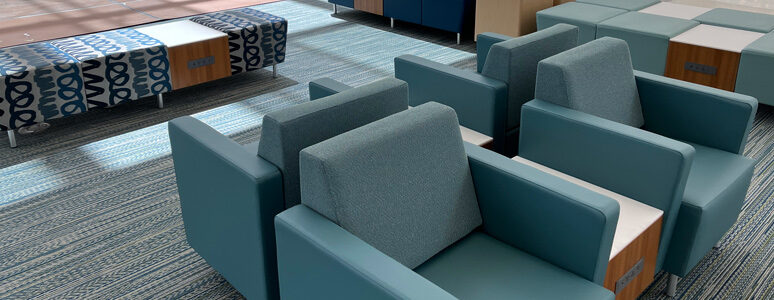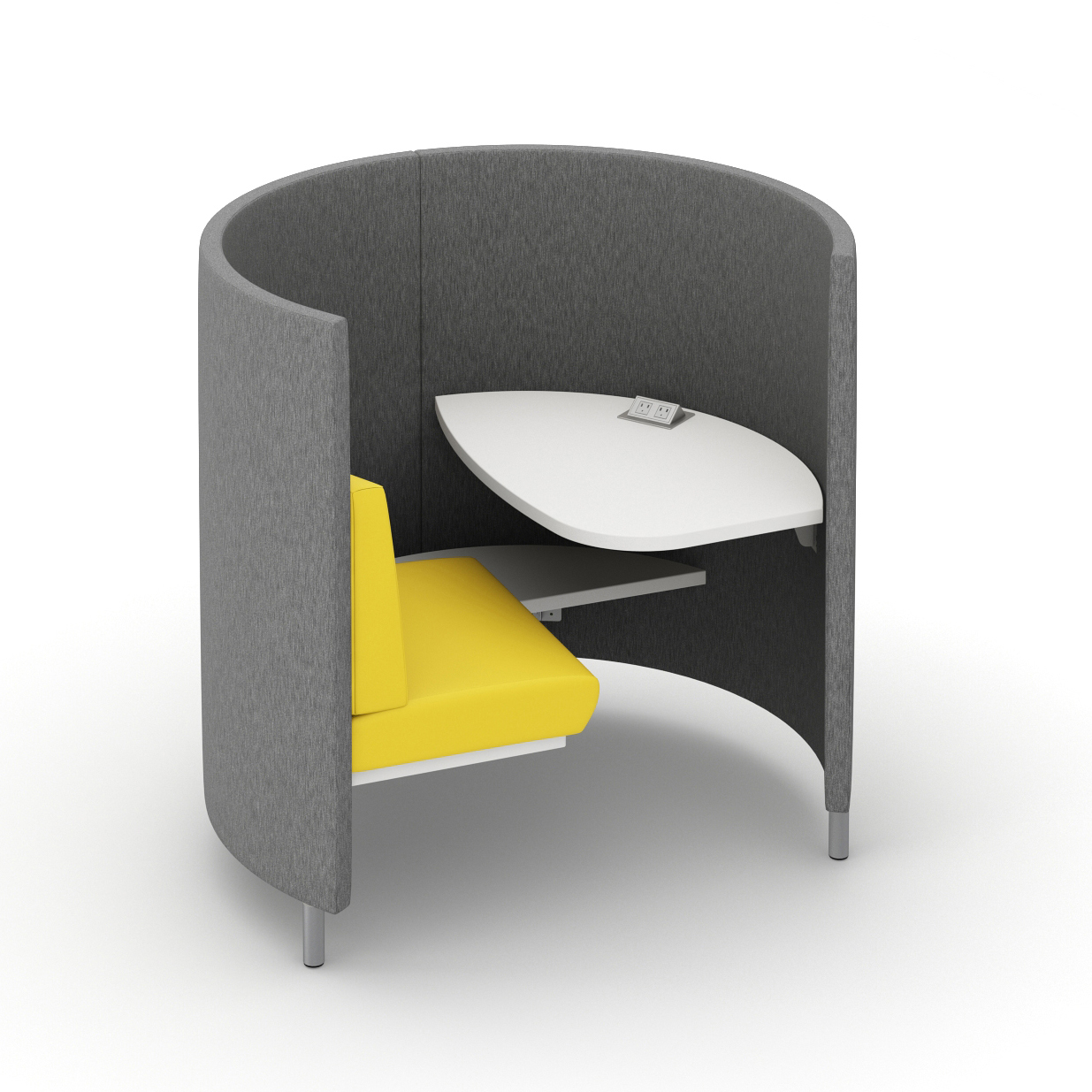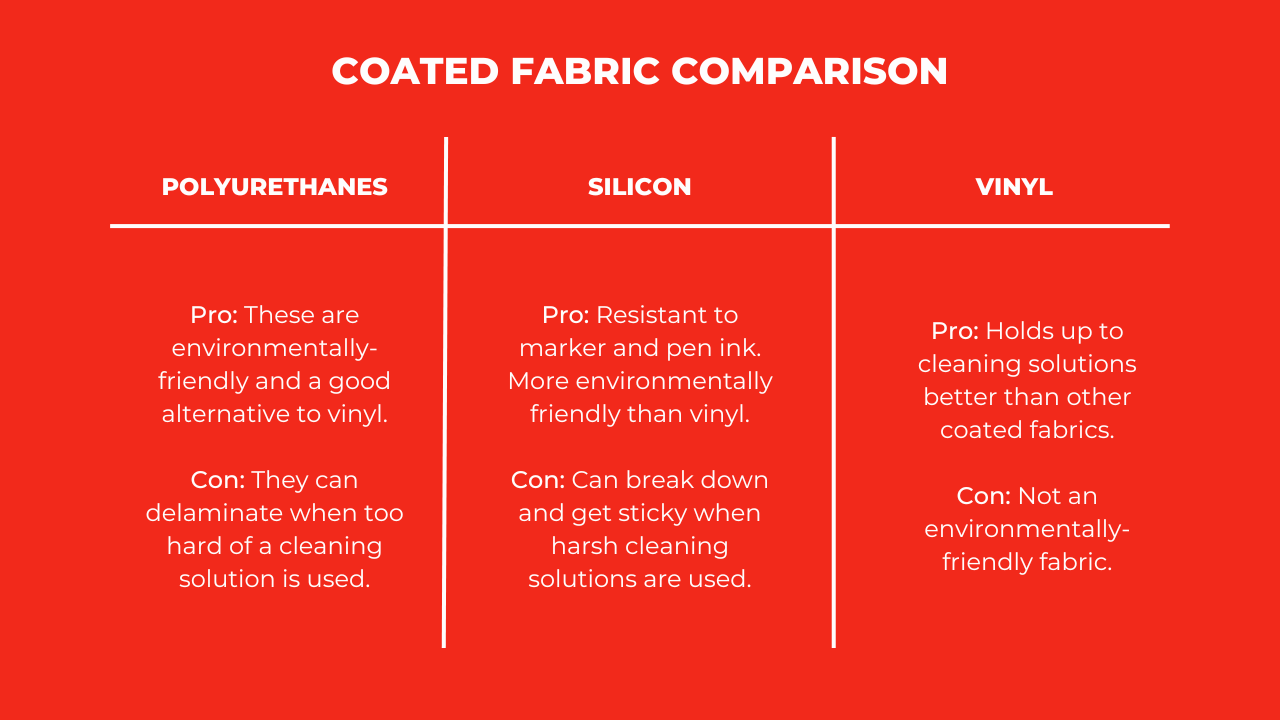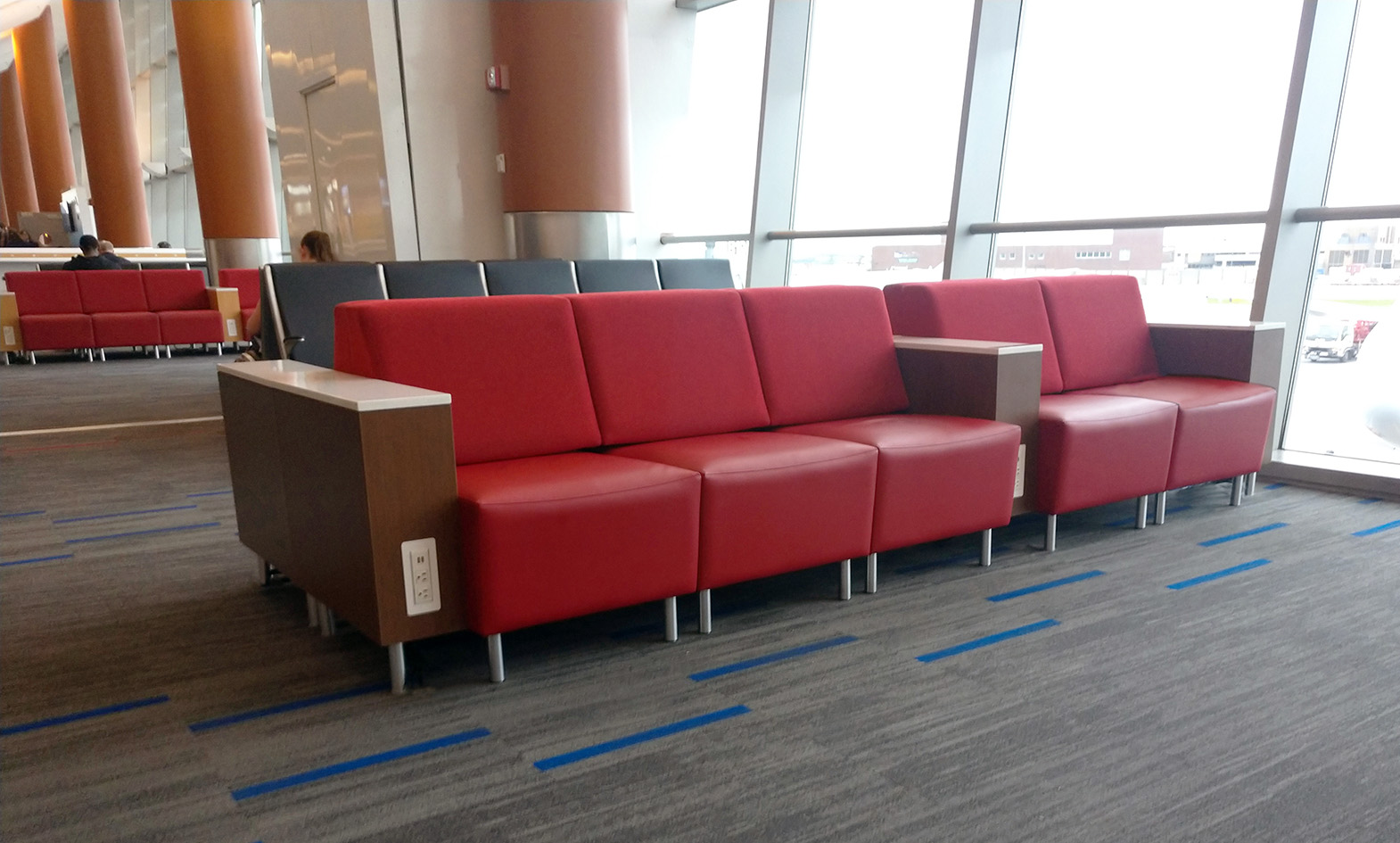
There are many things to consider when choosing the right furniture for high-traffic spaces such as airports, libraries, universities, government buildings, and more. These are spaces where durability gets put to the test.
Agati is devoted to making some of the most innovative and durable furniture for public spaces. This means that everything from the cushion to the back to the feet needs to hold up to the sometimes thousands of users that may pass through your space over the span of a day.
We spend the extra time to craft our pieces to withstand high-traffic wear and tear so you can know that your investment in furnishing your space will last for years to come. We have meticulously tested hundreds of foam and material combinations to strike the perfect balance between comfort and durability.
But let’s talk about the most vulnerable part of any furniture—the fabric. This is the most susceptible to wear and tear as it is the most used and the softest material that makes up your seating.
READ MORE: Making Smart Fabric Choices for Institutional Spaces
Finding the balance between style and durability can be challenging when it comes to selecting a fabric to match the aesthetic of your space but still hold up to heavy use. Picking the right fabric with durability in mind will keep those instances to a minimum.
When it comes to selecting a fabric for your high-traffic space, here are some things to look out for:
Check the Double Rub Rating
A double rub is simply a term used for the results of a durability test for fabric. Simply stated, the amount of times something rubs the fabric before it shows wear. Think of it as the number of times someone could sit down and get up from a piece of furniture before any wear.
According to the Association of Contract Textiles 30,000 DR is generally suitable for woven fabrics, 50,000 for coated fabrics and considered suitable for commercial spaces. Fabric that will perform the best in high-wear environments should have close to or exactly a 100,000 DR.
But beware: Many fabrics will boast over a 100,000 DR, but beyond that number, true performance is not actually predicted. This isn’t the only factor that will help you determine if a fabric will withstand years of use.
Summary: A fabric with a double rub rating close to 100,000 may be a good candidate for your high-traffic space.
Woven vs. Coated Fabric
 There are many pros and cons to these fabric types, which is why it’s important to know the benefits and the risks before choosing between them. One of the key differences is the ability to keep these fabrics clean. Woven is more prone to collecting dust and crumbs that require a vacuum or stain removers to get out, though you can add stain blockers like Crypton or Nanotex to a woven to help resist the staining elements the fabric might encounter.
There are many pros and cons to these fabric types, which is why it’s important to know the benefits and the risks before choosing between them. One of the key differences is the ability to keep these fabrics clean. Woven is more prone to collecting dust and crumbs that require a vacuum or stain removers to get out, though you can add stain blockers like Crypton or Nanotex to a woven to help resist the staining elements the fabric might encounter.
Coated fabrics are much easier to wipe clean. Use caution when using hard cleaners on coated fabrics, however, as they can cause the fabric to delaminate, break down, or feel sticky.
Another key difference is their ability to resist punctures and tears. Coated fabrics are prone to puncturing and they are impossible to repair without replacing the entire piece of fabric. Woven fabrics are more resistant to puncturing and even tears can often be repaired when they occur.
Different types of coated fabrics have certain drawbacks and benefits as well:

- Polyurethanes
- Pro: These are environmentally-friendly and a good alternative to vinyl.
- Con: They can delaminate when too hard of a cleaning solution is used.
- Silicon
- Pro: Resistant to marker and pen ink. More environmentally friendly than vinyl.
- Con: Can break down and get sticky when harsh cleaning solutions are used.
- Vinyl
- Pro: Holds up to cleaning solutions better than other coated fabrics.
- Con: Not an environmentally-friendly fabric.
When it comes to choosing between woven or coated fabrics, there is no magic fabric that does it all. It is important to consider which features most benefit your space. When considering what material should be used in a government building, museum, or library where food may be prohibited, staining will take a lower priority than punctures and tears. But for airports and universities, stain resistance will need to be given equal consideration when choosing between fabrics.
Summary: Woven fabrics hold up well when used for screens, panels, and accents. Woven fabrics resist punctures, but not stains. A stain blocker may need to be added.
Summary: Coated fabrics are great for seats and chair backs and are highly resistant to stains from food or drinks. Downsides include delamination when harsh cleaners are used, not always an environmentally-friendly material, and prone to punctures.
Consider Cleaning
Different fabrics require different cleaning methods. Some fabrics will degrade faster if the wrong chemicals are used to clean them. Always take into account the cleaning instructions before you decide on a fabric, as incorrect cleaning products or methods is one of the quickest ways to make a piece of furniture less durable.
When it comes to cleaning ,you should also consider your cleaning staff. Do you have enough staff and machines to handle a fabric that requires vacuuming and stain removal? If you use a cleaning service, have you communicated the cleaning instructions clearly? You will want to coordinate closely with your staff to ensure the appropriate cleaning method is used.
–
When selecting a fabric for a high-traffic environment, consider how people interact with the space. There is no fabric that matches every high-traffic space equally, which is why it can be a balancing act! Our team is here to help guide your decision and help you find the right choice to use in your space. Get in touch >>

